At UH, we value the gorgeous diversity represented and showcased through the student body, but have we ever stopped to appreciate the myriad fashion statements they bring to the table? All over the world, clothing is a direct representation of culture and identity, so we asked students to flaunt their cultural couture and tell us what it means to them. Each outfit holds significance for not only the country they represent, but for the individual as well. We are all different, and that’s something worth celebrating.
Photos by Justin Cross and Ajani Stewart
Viraj Lele
At the beginning of April on the Indian coast of the Arabian Sea, the state of Maharastra erupts in laughter and celebration. It’s the new year—each state in India has their own day, and Maharastra’s is either April 1 or 2, depending on the year.
Typically on this day, industrial engineering graduate student Viraj Lele will wear his kurta, the traditional clothes for formal events like weddings and festivals. Mostly, Lele said, politicians will wear it—usually in white to symbolize purity—to persuade voters that they are choice candidates.
For Lele, it’s a great material to wear anywhere in the world. In Houston, he gets to represent his country, look stylish and keep cool.
“It’s very comfortable, especially in the high temperatures of Texas,” Lele said. “It’s a complete cotton-made fabrics, so we don’t sweat that much.”—TS
Joana Nunes
In Brazil, the beginning of winter kicks off with a nationwide party, the Festa Junina. Originally a Catholic holiday, the festival also heralds in the yearly harvest, which calls for everyone to dress up as farmers, of course.
Women wear braided pigtails, painted on freckles and colorful, short dresses, while the men often paint on beards and mustaches. Traditionally, the party-goers light a bonfire as the party goes into the night.
For supply chain junior Joana Nunes, celebrating Festa Junina is a time for fun, and being with friends and family in her hometown of Rio de Janeiro. It’s also a time to dress up in festive, swirly dresses to go dancing.
“We sometimes get together and go to someone’s backyard and have it,” Nunes said. “It makes me happy.”—KJ
If you’ve never worn a turban, don’t plan a trip to the Punjab state in India any time soon, as turbans are a must-have fashion statement in this northern region. Representing honor and pride in the Punjabi culture, turbans come in all shapes, sizes and colors.
Navjot Randhawa, a material science engineering graduate student, shows off his brilliant orange turban, tied in the popular Patiala Shahi style.
According to Randhawa, the way you tie your turban and its color are all up to personal preference. While their origin lies in the religion Sikhism, today they have evolved into haute couture.
“Every style says something about a person. You can judge a person by their turban,” Randhawa said. “You can recognize a person by looking at their turban—you don’t even need to see their face.”
While turbans are a source of pride, Randhawa said he often tones down his turban with more neutral colors and less-extravagant styles because most western people view them as too “exotic.” But that doesn’t stop Randhawa from sporting the current Punjabi fashion of vivid colors.
“For my generation, there are really not many (fashion) boundaries.”—KJ
The festival of Garba, held each year in the north Indian state of Gujrate, celebrates the goddess Durga with music, food and the traditional raas folkdance. If you plan on attending a Garba party, it’s essential to wear the floor-length lengha dress, complete with its delicate, over-the-should shawl.
For marketing and entrepreneurship senior Ami Patel, a lengha represents the vivid, fun-loving aspects of her culture, and she plans on wearing hers to the next Garba festival, which will be held on Oct. 10 at UH.
According to Patel, the shawl plays special significance in the outfit, as you might be able to tell which part of India someone is from based on where it is placed.
While fashion in India is very different depending on the region, Patel said there is a common stitch in all the different threads people wear.
“Fashion in India is very diverse between states. It’s a mix of western and ethnic culture,” Patel said. “It’s different wherever you go. But the string between them is colors.”—KJ
Imagine leaving behind your extended family and everything you’ve known to move to an entirely different culture across the globe.
This is what biology senior Arefin Nowreen experienced when she first left Bangladesh in 2009, but she said her sarees—multiple-piece dresses from Bangladesh—help her feel reconnected to her family and culture.
Sarees are worn during everyday life, but there are more elaborate designs worn specifically during parties and weddings. The one Nowreen is wearing is made for celebrations, and falls floor length after elegantly wrapping around her shoulder.
The colors of sarees also represent different things: black and white depict mourning, red and green show national pride and white represents new life and beginnings.
While Nowreen is proud of her sarees, she said there have been times in America where she felt uncomfortable and outcast because of them.
“Sometimes people would stare at you,” Nowreen said. “They’ll say, ‘she’s so not modern because she wears that.”
But in spite of those people, Nowreen said her sarees remind her of home, and she loves wearing them because they remind her of her grandmother and aunts in Bangladesh.
“I know that we’re a child of this whole world, but you have to keep some part of the root because that’s how it becomes diverse,” Nowreen said. “If I didn’t know all this about my culture, you wouldn’t learn something new. I do it, even if people say things.”—KJ
The kurta is the most versatile piece of clothing in Pakistan, and while the fashion industry is rapidly evolving to include western additions like blue jeans and tennis shoes, it’s still the popular choice.
Electrical engineering graduate student Ahmed Hassan moved to Houston from Islamabad, Pakistan in August, 2015. He represents the younger generation of Pakistanis by wearing jeans and sandals with a red kurta.
According to Hassan, most young men in Pakistan keep their traditional roots with the kurtas, but mix modern into their fashion by adding western clothes underneath. Although it is a mixture of cultures, Hassan said he still does not feel comfortable wearing his kurta to school or in everyday life.
“I don’t feel secure when I wear it here,” Hassan said. “I’ll wear it if we have a holiday or cultural dinner or something, because people see you differently.”
Hassan said that UH is “better than other campuses” when it comes to cultural acceptance, but he doesn’t feel the same wearing when wearing it.
In Pakistan, kurtas are a fashion statement, sometimes reaching upwards of $1500 for an extravagant design. Kurta colors are evolving as well, and Hassan said he is proud to wear such an essential part of his culture’s clothing.
“I feel confident and honored that I’m representing my culture.”—KJ
Weddings in Pakistan are three-day events. On the first day, called Mehndi, men will wear a traditional and incredibly fancy kurta shalwar with a waistcoat. On less formal events, they might drop the waistcoat.
Industrial engineering graduate student Bilal Majeed is from Lahore, Pakistan, where he grew up learning the importance of dressing nicely. Some of Majeed’s non-Pakistani friends have tried on the kurta shalwar and loved it, but he still doesn’t wear it around UH because he would stand out.
At cultural events like an upcoming Eid dinner with the Pakistan Student Association, however, he thinks it might feel more appropriate, because everyone will be dressing in their cultural way.
“While you’re out of your country, it’s one way of representing your culture,” Majeed said. “Dressing is something that’s really taken seriously in my country. You’ve really got to dress up nice.”—TS
It would be easy for mechanical engineering sophomore Jeeshan Rashid to dress in jeans and T-shirts like the typical American. Raised in League City, Texas, Rashid grew up in the truest American way—by immigrant parents from Dhaka, Bangladesh, who moved to the U.S. to start a new life and bring opportunity to their children.
Today, Rashid likes to wear a modern take on the kurta because he loves the patterns, which are a staple in the booming South Asian fashion industry. He said that up-collar shirts, a recent style in Western fashion, are his country’s traditional garb.
Rashid’s dress is a symbol of his originality and origins—and he works to represent that as the marketing director for the Bengali Student Association on campus. It’s important to him to perpetuate understanding of his culture and make his community feel comfortable in Houston.
“My country has shown me a lot of love,” Rashid said. “I try so hard to reach back to the roots because I want people to know that I’m a child with parents who were immigrants who worked really hard to give me a better life, and the least I can do is try to represent my country well.”—TS
On a typical day in her hometown of Kathmandu, Nepal, Snigdha Poudyal might wear a saree or jeans—nothing too fancy, in her opinion. But on special occasions, the nutrition senior wraps her hair into a braid called a choti and dons her choli, a blouse, and a colorful and fun dress called gunnu. The unique dress is typically for the Himalayan region from which Poudyal comes, and its breathability makes it easy to walk in.
Jewelry is an essential part of fashion for the Nepalese. Since she was a child, she has worn chura, a common bracelet. Men typically give their brides a potae, or a vibrant necklace, when they marry. Poudyal is not married, but she wears one because she thinks it’s beautiful and wants to represent her country.
But Poudyal doesn’t necessarily represent everyone in Nepal, which she said has more than 30 ethnic groups but no religious wars. She’s from the Brahmin caste, which is the upper echelon of a mostly outdated social hierarchy in Hindu-majority countries that used to advise the king. Now, she said, the caste system has little prominence, but someone from a traditionally lower-class family or someone from a different region of the country might fashion themselves a little differently.
For Poudyal, that’s nothing to be embarrassed by, because she said everyone should reflect their identity in their dress.
“It’s not weird,” Poudyal said. “It’s clothing, and we’re from that part of the world. It’s representing yourself and your culture, and you shouldn’t be ashamed of it.”—TS

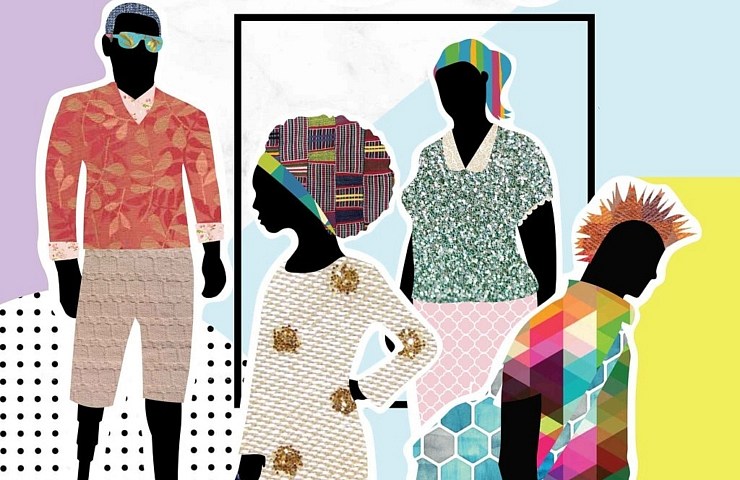
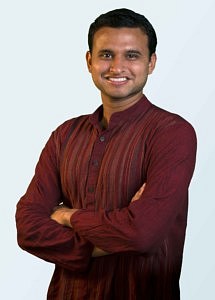
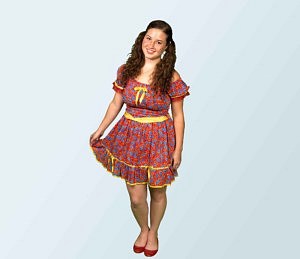

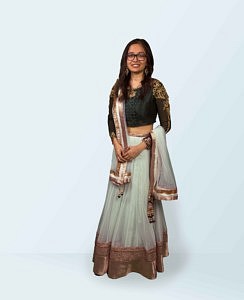
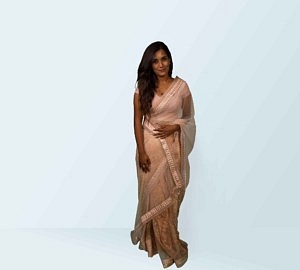

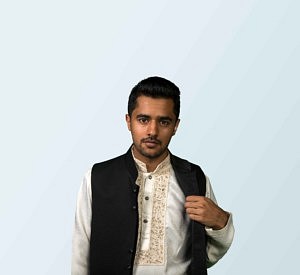
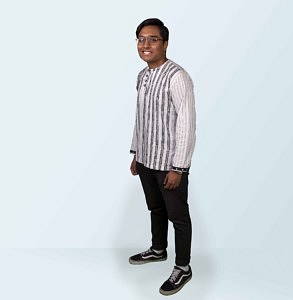
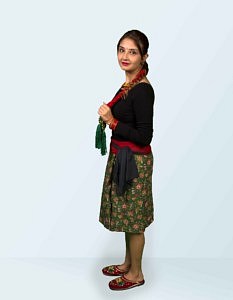
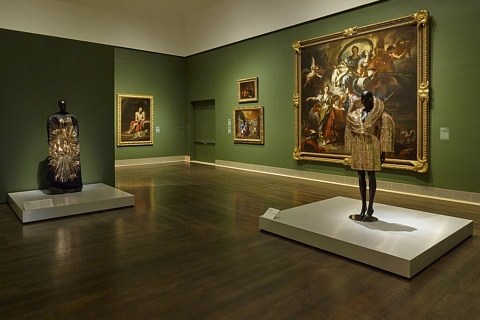


Recent Comments